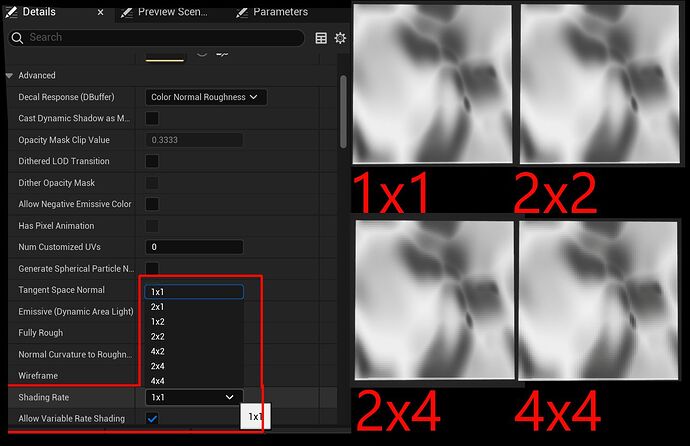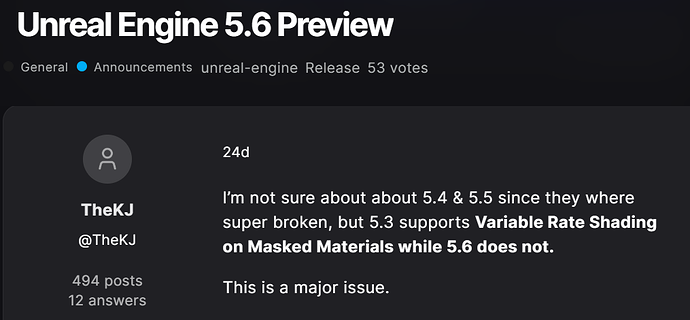UE5 lets you optimize materials using Variable Rate Shading (VRS). It runs your pixel shader once for a block (like 2x2 or 4x4), then spreads that result — reducing pixel shader cost with minimal visual loss.
This feature is not related to LOD, Nanite or Virtual Shadow Maps - it’s a separate material level optimization.
- In practice, you might see 10–50% improvement on fill-rate-bound scenes, sometimes more (often less).
- Works per-material, no global setup needed.
- Available since UE5.0 (DX12/Vulkan required)
Open your material — Details — Advanced — Shading Rate (1x1) — Change
The larger the block, the less GPU load, but also more visible blur
Great to be used on background VFX, or anything that doesn’t need crisp pixel detail.
Limitations
- Doesn’t work with DLSS or on all platforms.
- Not supported for masked materials in UE5.6. May be broken with masked materials in earlier versions.
I learned about this feature thanks to a super-duper-senior-boss-chief-king tech art wizard — Dmytro Baidachnyi. All hype to him.
Cheers

